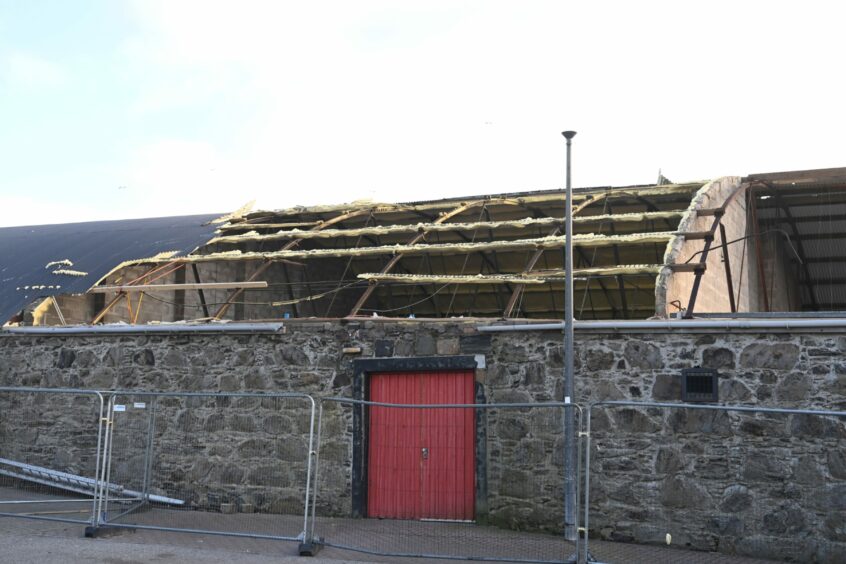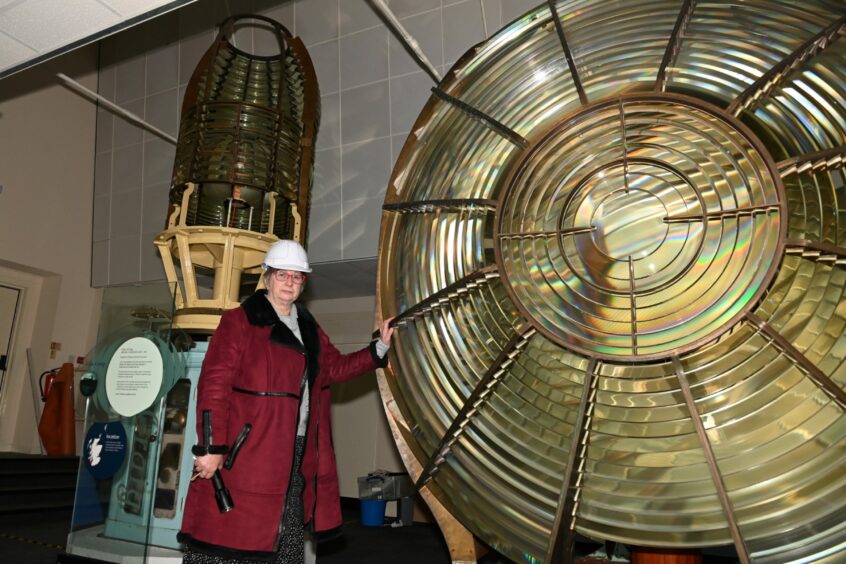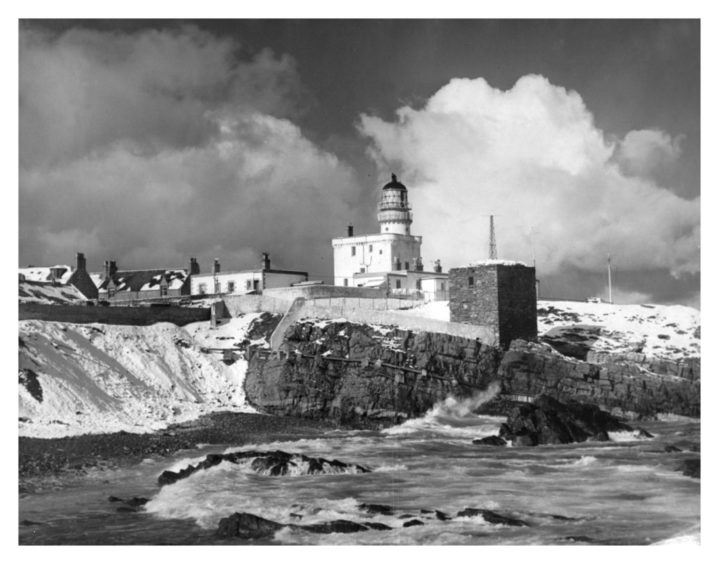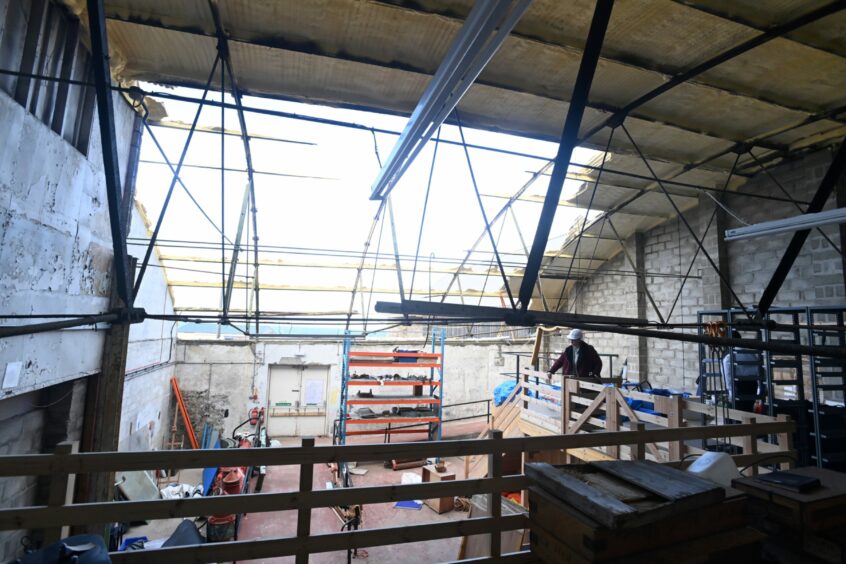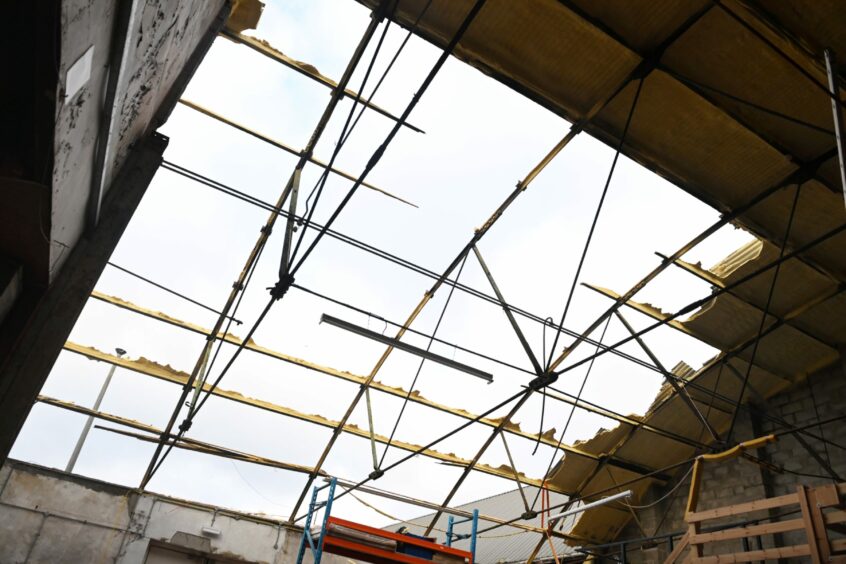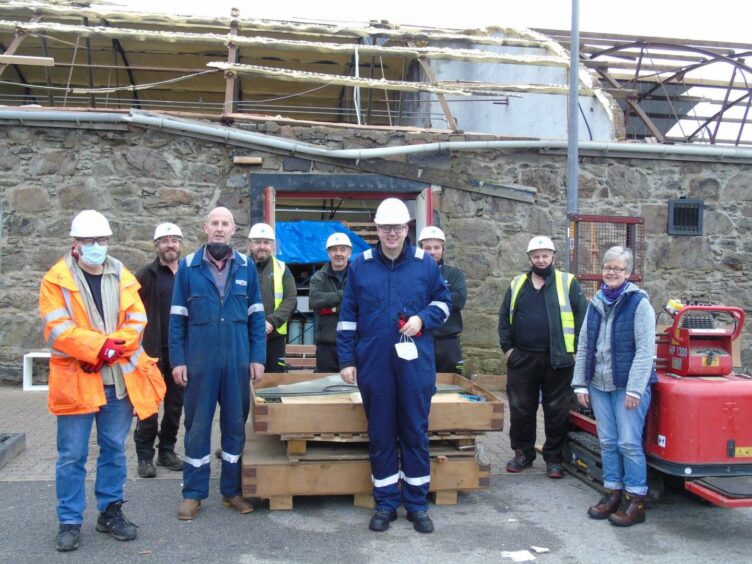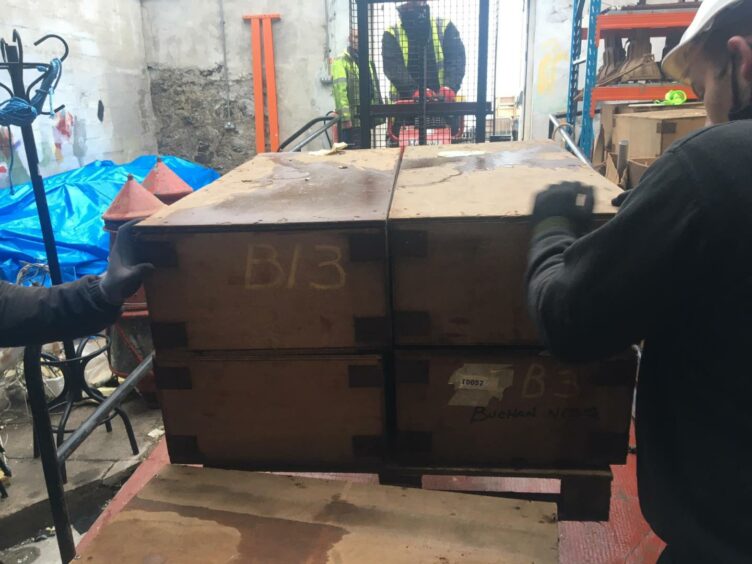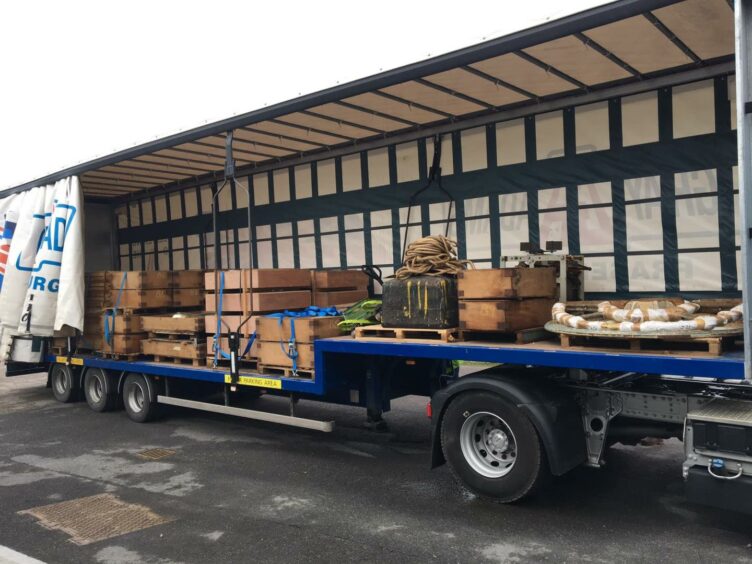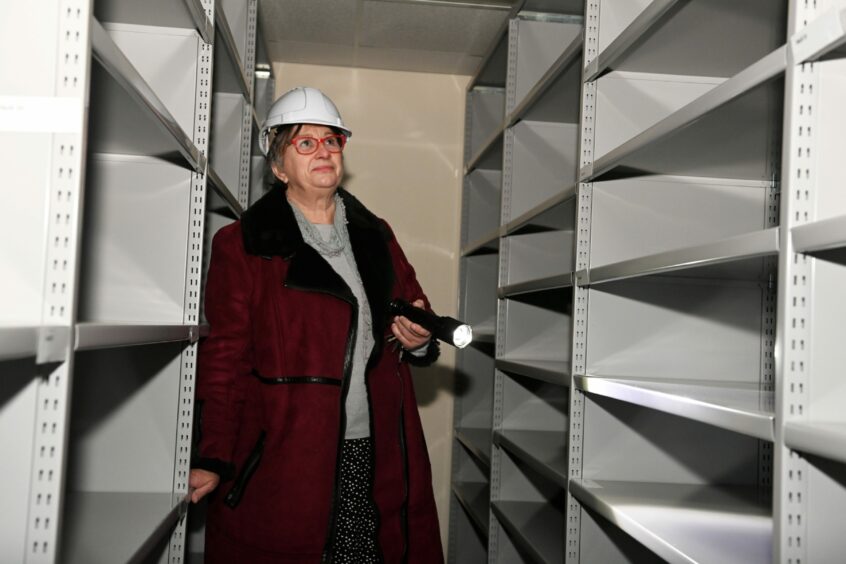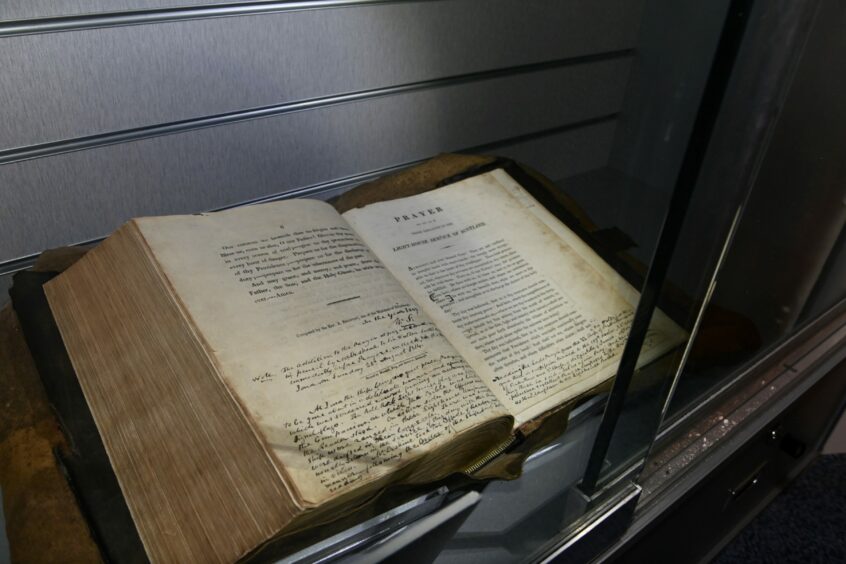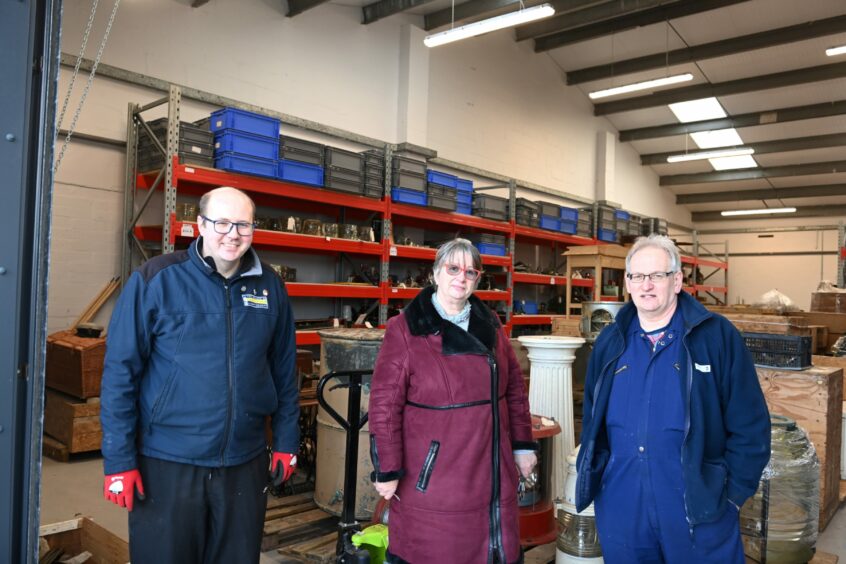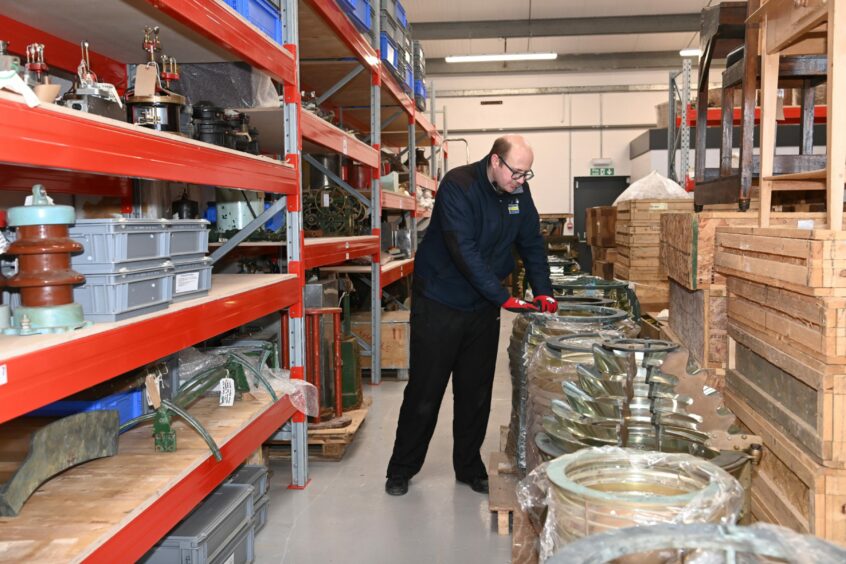Lynda McGuigan broke down in tears when she saw what Storm Arwen had done to her beloved workplace.
Gusts of 140mph tore the roof from the storeroom of Fraserburgh’s Museum of Scottish Lighthouses, leaving countless irreplaceable artefacts exposed to the elements.
And there were “still bits of roof swirling everywhere” the next morning.
The venue’s manager had to wait hours to get in and inspect the damage.
As if the state of the building wasn’t enough, she realised how severe Storm Arwen had been when she spotted a lifeless crab on the storeroom floor.
The unfortunate crustacean had been whipped up from the foot of the cliffs below as wild gales blasted the coast, then dropped through the gaping roof.
- Aberdeen Journals was given an eye-opening inside look at the damage.
- And we got an insight into the enormous operation to save mounds of historic material from harm.
- But a determined Lynda vows to reopen the town’s biggest tourist draw in April.
Shocking chain of events began with weather warnings…
The Museum of Scottish Lighthouses opened in 1995, and has since accrued one of the world’s greatest collections of lighthouse memorabilia.
It shines a light on the engineers who built the life-saving structures and the keepers who looked after them.
As well as the huge lenses on view, there are about 20,000 pieces in storage.
Workers at the building, which closes to visitors over winter, were evacuated on the afternoon of Friday, November 26, amid warnings about the incoming storm.
Lynda had no idea what to expect, but its location perched atop cliffs next to the Kinnaird Head lighthouse means it is especially open to the elements.
Little did anyone know Storm Arwen would bring the strongest gales seen for decades to the north-east.
Overnight, thousands of trees were uprooted and 60,000 homes were left without power – some for as long as 10 days.
As soon as dawn broke that Saturday, Lynda made her way to the museum – a feeling of dread in her stomach.
When she got there and saw the state of the storeroom roof, and that of the town’s Heritage Centre next door, she was overwhelmed.
It immediately dawned on her that a mammoth task lay ahead…
Devastation at lighthouse museum the morning after Storm Arwen
Lynda said: “I was there by 7.30am, and just stood in the car park and cried. I was devastated.
“I knew what we were going to face.
“This is a national collection, we are the only dedicated lighthouse museum in the country.
“We have maybe the world’s largest collection of Fresnel lenses, and I had no idea if they were smashed.
“Not only had the roof been blown away, but the doors had been blown off too.
“By the afternoon, panic attacks were beginning to set in…”
What happened next?
Lynda, who has managed the museum for seven years and is its longest-serving employee, pulled herself together that afternoon.
“I thought ‘just put one foot in front of the other, Lynda, that’s the way to do it’. One thing at a time.”
Soon the sense of dread was replaced by a “warm feeling” as the community pulled together to help rescue the at-risk relics from any further wind and water damage.
The Broch’s Gray and Adams lorry firm sent trucks to help transport the huge artefacts – such as lenses weighing three tonnes apiece – to a nearby warehouse.
They also lent forklift trucks, and operators, to move the massive pieces of nautical history.
Historic Environment Scotland sent five workers to assist with the effort, and James Cowie from Aberdeenshire Council’s museums’ service is still lending a hand.
With no power for the first few days, they relied on torchlight to navigate the freezing building.
Storm Arwen aftermath still felt at lighthouse museum
It was a painstaking process, continuing throughout December.
“By Christmas, I was so tired I could barely put one foot in front of the other,” Lynda tells us.
Now, nearly two months on from Storm Arwen, the storeroom is about 95% empty.
More than 400 boxes have been shifted across the town in that time.
And, having examined the collection, Lynda is able to confirm that no lenses were broken.
However, some conservation work will need to take place on those which were blasted by saltwater before they could be taken away.
Damage crept into other parts of the site
The damage wasn’t contained just to the storeroom, however.
It is joined to an exhibition room, where lenses from the Isle of May and Fair Isle (north) lighthouses are displayed.
They will now need to be taken apart and boxed up while the water-damaged roof is replaced.
That means the space will be off-limits to visitors this season, though thankfully it makes up just a small fraction of the museum.
Adjoining staff offices and archives have also been cleared out and relocated.
Famous author’s bible among items salvaged from wreckage
Legendary writer Robert Louis Stevenson, who penned classics such as Treasure Island and The Strange Case of Dr Jekyll and Mr Hyde, comes from the Stevenson lighthouse-building family.
One of the most cherished items in the storeroom, which is now being kept in a display cabinet having been plucked to safety, is his personal bible – annotated with his notes.
And a selection of historic clocks from various lighthouses was recently moved from the store into the museum.
Had they not been relocated, Lynda thinks they might have been destroyed.
Lighthouse a beacon of hope for area
After a fraught winter, the team are looking forward to reopening on April 1.
The museum has been known to bring as many as 10,000 visitors to Fraserburgh per year, and staff always make sure to let them know about other attractions nearby.
Until the roof is replaced, the displaced collection is being kept in a warehouse that staff joke is reminiscent of the Hangar 51 vault seen in Indiana Jones.
Lighthouse museum bouncing back from Storm Arwen
Looking on the bright side, Lynda says the upheaval has given staff a chance to rummage through the collection – sparking ideas about how some exhibits can be re-displayed.
And having a conservator visit to spruce up the damaged items will provide a training opportunity for devoted workers.
The museum manager added: “It’s made us think about what we can do better, can we present these items in a different way?”
Now when she gazes at the scores of items saved from destruction, Lynda sees a sea of opportunity.
You can learn more about the museum here.
